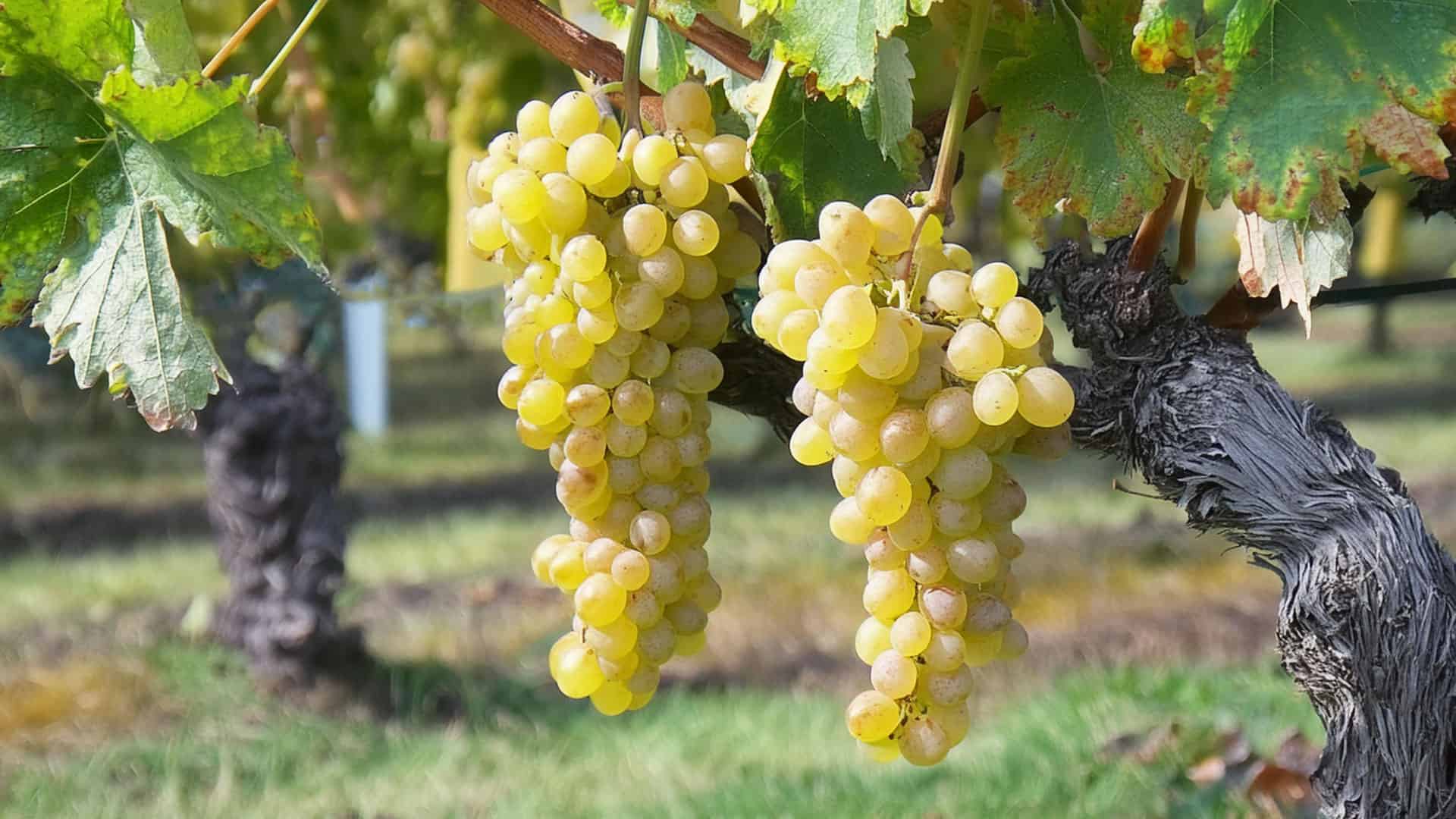Introduction: Muscat white wine
In our online store you will find single-varietal Muscat wines as well as blends with the Muscat grape. Our range also includes numerous other white wines, rosé wines, red wines and sparkling wines. Lovers of high-proof spirits will also find an exquisite selection of digestifs in the shop.
If you are looking for a gift, we recommend the various tasting boxes from our gift service, for example, or a gift voucher, which gives the recipient a free choice in our online shop.
The most important facts about Muscat blanc at a glance
- Muscat blanc is one of the oldest grape varieties in the world. Whether it was introduced by the Greeks to their colonies in southern France or only came to southern France with the Romans cannot be said with certainty. It is thought to have been cultivated long before that, perhaps even in Asia Minor.
- The name Muscat is associated with the Latin word musca. The word means fly, and it is assumed that the name of this grape is due to the fact that flies are very fond of this grape variety.
- The grape variety is widespread worldwide (33,000 hectares under cultivation), and the Muscat grape variety family is large with over 200 varieties and correspondingly widely branched. Not all of them originate from a single grape variety. Rather, varieties with the same name have been added to this family over the centuries as mutations, natural or cultivated crosses.
- The grapes of the individual varieties vary in color from yellow to green, red, blue, purple and black. What they all have in common, however, and what makes them unmistakable, is their intensely spicy aroma with an unmistakable nutmeg note.
- In Valais, Switzerland, the grape was first mentioned under the name Muscatelli in 1536. The fact is that two different Muscat grapes have made it to Valais. The native Muscat, also known as green Muscat and identical to the Italian Muscat giallo, and the small-berried Muscat blanc (Muscat Blanc à Petits Grains Ronds). The latter is considered the noblest variety in the Muscat family.
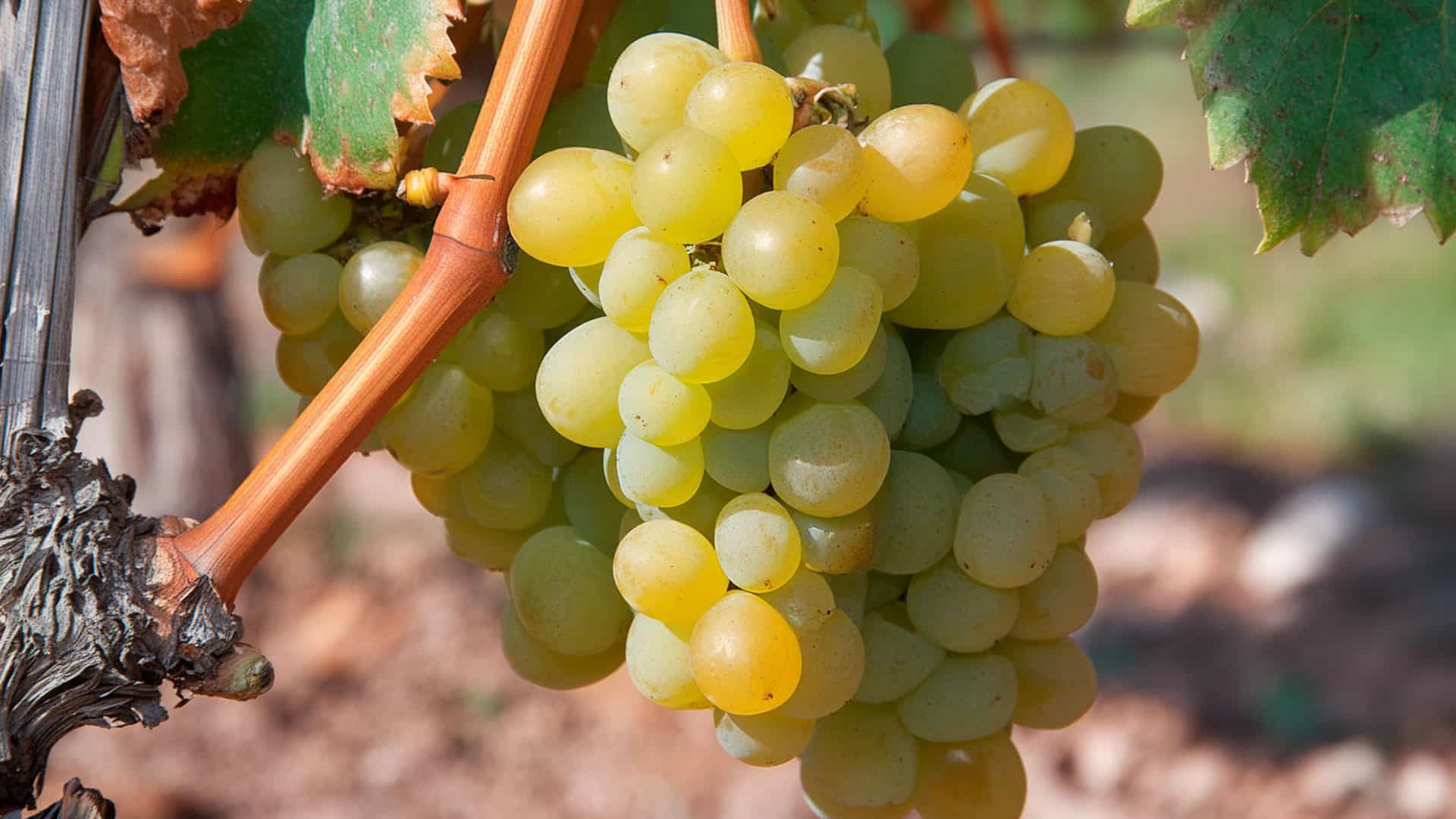
Origin, origins & significance of the Muscat grape variety
Muscat blanc is one of the oldest and best-known grape varieties in the world. It originates from the Mediterranean region around Greece. It is said to have passed from the Greeks to Etruscan tribes and to the Romans. It was first mentioned in 1304 as Muscatellus in the Ruralium commodorum libri duodecima by Pietro de Crescenzis.
Scientific studies have shown that Muscat blanc (also known as yellow muscat) is not only related to some Greek grape varieties, but also to the Italian Malvasia bianca variety. The second important grape variety in this family, Muscat d’Alexandrie, is also said to have originated from the crossing of Muscat blanc à petits grains and the old grape variety Axina de Tres Bias, which is found in Sardinia. The latter has also long been known in Greece as Eftaikolo or Heftaklio. All this evidence proves that the origin of Muscat blanc must have been in Greece or possibly in Italy.
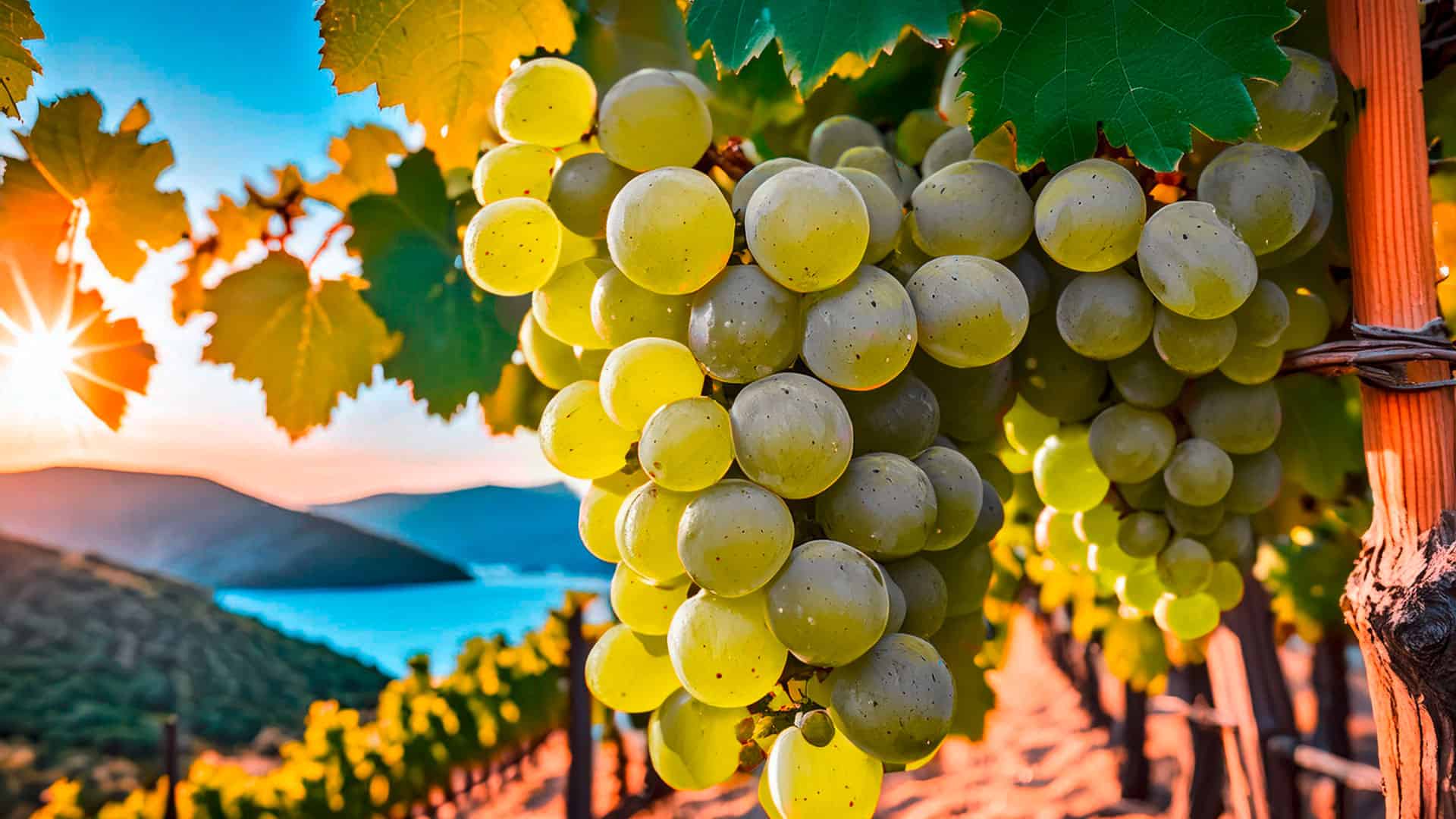
The grape is cultivated on 33,000 hectares of vineyards worldwide. Of the more than 200 grape varieties, three stand out in particular:
- Muscat blanc à petits grains: this is the noblest and highest quality grape in the family and is also known as Yellow Muscat, Moscatel and Muscat de Frontignan. As the berries of this variety are smaller than those of the other members of the family, it was given the suffix “à petits grains”. In Italy, it is used as Moscato bianco on around 11,000 hectares of cultivated land to produce the base wine from which the famous Asti spumante, a sweet, floral-scented sparkling wine, is made.
- Muscat d’Alexandrie: This variety is similar in age to the Muscat blanc and tolerates heat even better than the Muscat blanc grape, but only produces a lower quality in the glass and is also marketed as table grapes.
- Muscat Ottonel: This variety is only around 150 years old, originates from the Loire Valley and is mainly grown in Austria. Its characteristics are similar to Muscat, but slightly less fragrant.
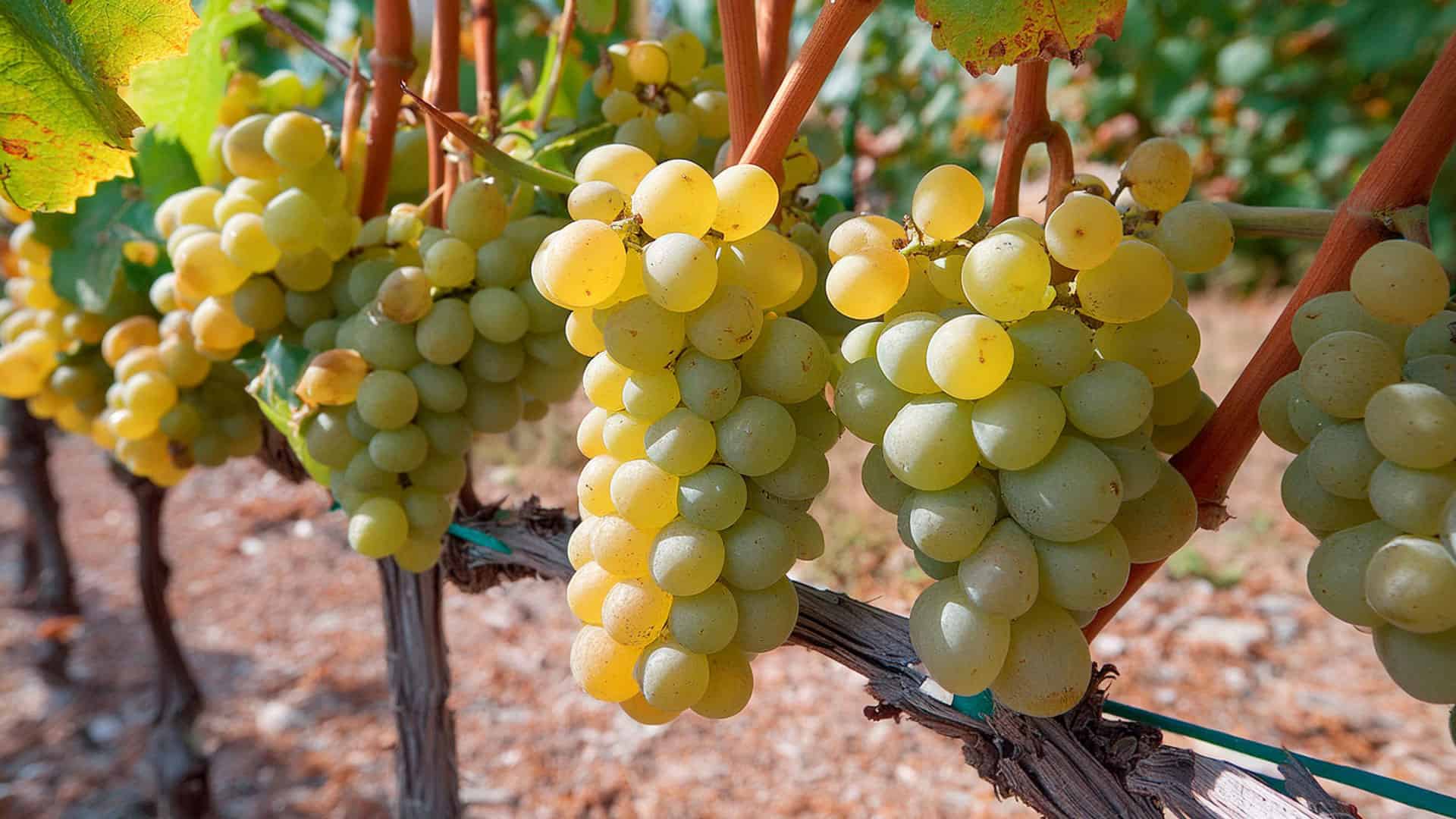
Even though the Muscat grape is primarily known for its unmistakably fragrant sweet wines or dessert wines, a dry white wine is increasingly being made from this grape variety in a wide range of countries such as Germany, Austria, South Tyrol, the Mediterranean region, French Alsace and Valais in Switzerland. Thanks to its intensely spicy aroma and sweet flavor, paired with spices and citrus fruit aromas, this is a fresh summer wine with a good acid structure.
Muscat blanc and its synonyms
In the Vitis International Variety Catalogue of the Geilweilerhof Institute for Vine Breeding, there are more than 320 synonyms for Muscat blanc alone, i.e. for the yellow Muscat grape varieties. The most important are Muscat blanc à petits grains, Moscato bianco, Moscato giallo, Gelber Muskateller and Weisser Muskateller.
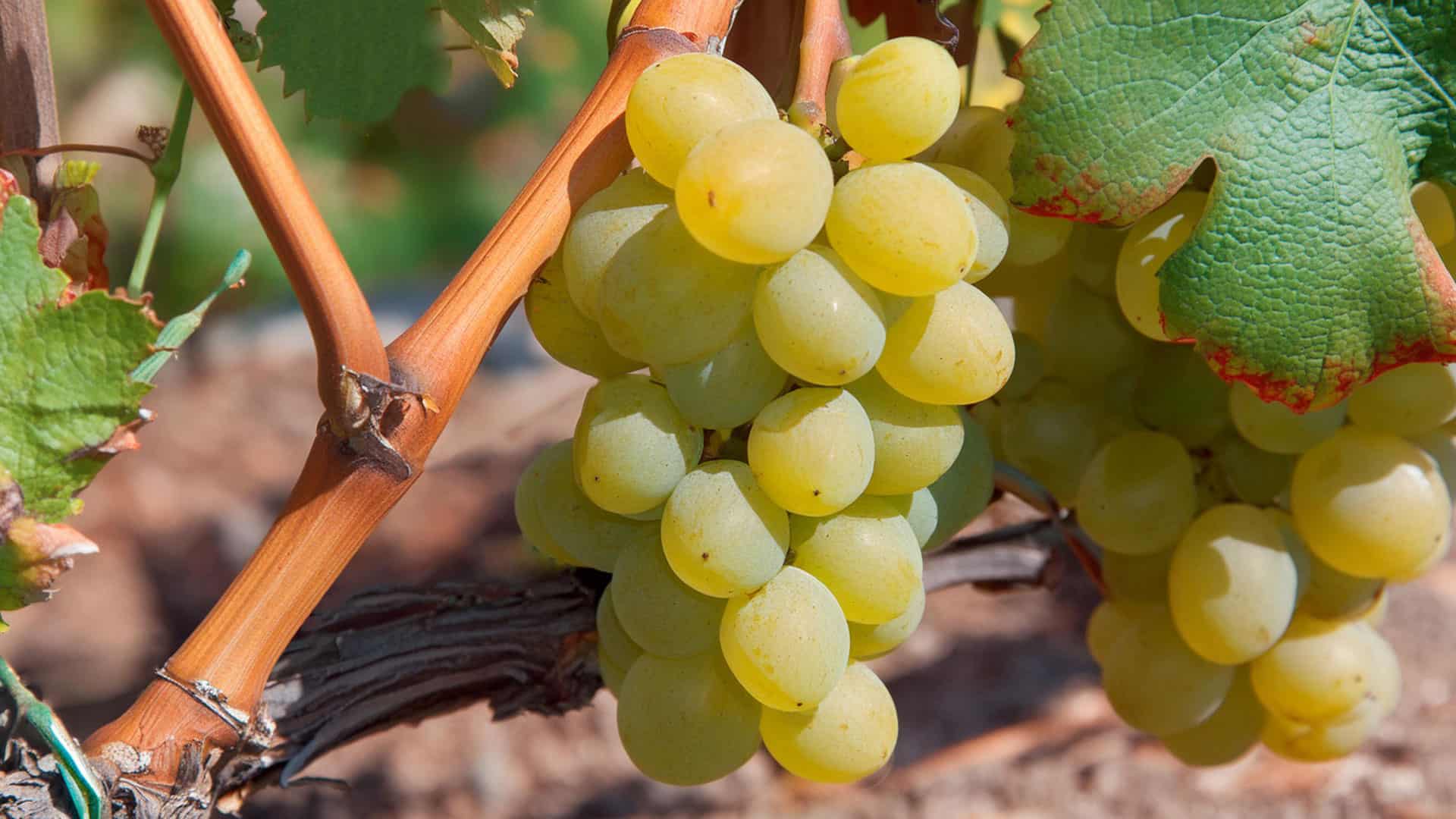
Characteristics of the Muscat grape: growth, ripeness and yield
Muscat grapes prefer warm, airy and sheltered growing regions. The grape variety makes no particular demands on the soil; light to medium-heavy soils with a low lime content are perfectly adequate. Yields can be considered medium-high, but are also uncertain due to its sensitivity to flowering.
The cylindrical berries of these wines crack easily, especially in damp autumn weather, which can lead to berry rot known as botrytis. In a dry and warm climate, on the other hand, the grape with its roundish to slightly elongated shape, which is known for its sensitivity to winter frost, matures early and is harvested medium-late to late.

Taste profile of Muscat blanc: unmistakable aroma and flavor, sweet on the palate with a long finish
The bouquet of these wines is characterized by an inimitably intense aroma and typical spiciness. Sweet on the palate, with a complex aroma, the dry wines are very lively and delight with notes of musk, exotic fruits and rose petals. As a sweet wine, the harmony of fruit, acidity and the sweet finish is particularly impressive. The ideal drinking temperature for complete enjoyment is between 8 and 10 degrees.

Muscat blanc and food: The best combinations
The Muscat blanc white wine with its unmistakable interplay of aromas can be enjoyed with a mild hard cheese, a fine cheese slice and freshwater fish or simply as an aperitif. As a wine with residual sweetness, Muscat blanc is unsurpassed with a variety of desserts, fruit and cheese.
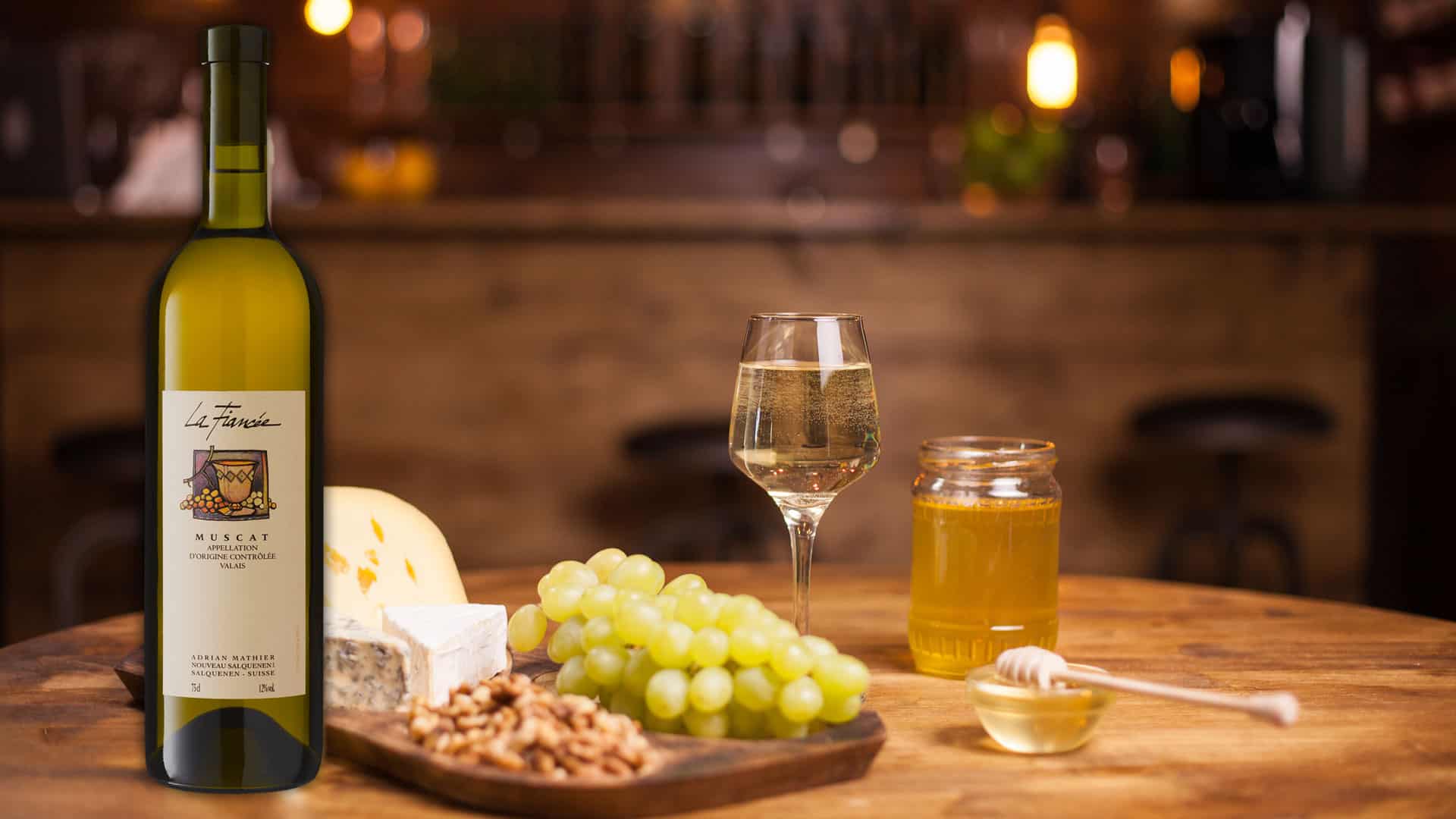
Interesting facts about Muscat AOC Valais
Here is an overview of important facts about the Muscat grape variety.
What does Muscat wine taste like?
Muscat offers a wide range of flavor nuances. The Morio Muscat is characterized by aromas of white peach, pineapple and lychee as well as floral notes such as lily of the valley, jasmine and violet. In contrast, Muscat Ottonel has flavors of pear and apple, orange, mandarin, quince and almond.
Is Muscat wine sweet?
Muscat wine often reveals an unmistakable aromatic character reminiscent of nutmeg, orange or flowers. It can be produced in different styles, be it dry, semi-dry or sweet. In general, Muscat wine has a lower alcohol content and a higher residual sweetness than other wines.
How do you drink Muscat?
White sweet wine from the Muscat grape is always enjoyed in small quantities and well chilled, either as an aperitif or as an accompaniment to starters, for example with foie gras. As the crowning glory of a successful meal, the right sweet wine is like the grand finale to a firework display.
Are Muscat and Muscatel the same thing?
The Muscat family currently comprises around two hundred different varieties. Among them, the yellow Muscat, known in France as Muscat Blanc, Muscat de Frontignan or Muscat Blanc de Petits Grains, is considered the most noble representative of its kind.
Is Muscat a grape variety?
Muscat is a white grape variety and belongs to the extensive Muscat family. It is used to produce excellent sweet wines.
Is Muscat sweet?
Is Muscat wine (made from the yellow muscatel berry) sweet? Yes, Muscat wine, also known as Muscat, Muscatel or in Italy as Moscato, is generally a sweet wine.

